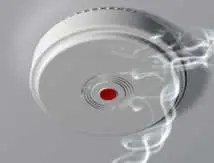Fire Prevention & Inspection Division
In a continuing effort to improve life and fire safety for citizens in Jefferson County FPD No. 1 Assistant Chief Brian Tracer leads the Fire Prevention and Inspection Division.
This division focuses on inspection efforts on places of mass gathering such as hospitals, nursing homes and churches before transitioning to local businesses. Chief Tracer stated that his division will initiate contact with owner/managers of inspection sites to arrange a time to conduct an inspection.
EJFR Offers Free Training to the Public
Please call the Administrative office at (360) 385-2626 if you would like to schedule Fire Safety training for a group. Be sure to give us at least a week to schedule and prepare.
Self-Inspection Building Worksheet
Below, you’ll find a copy of our self-inspection building worksheet. Feel free to download and use this form while conducting a self-inspection of your premises. This is an excellent indicator of what we’ll be looking at when our inspectors arrive.
Fire Safety Inspection Checklist for Home
You don’t need the fire department to conduct your own fire safety inspection. Use this checklist as a guide while performing your home inspection. Better still, make the inspection a family event so everyone becomes more aware of fire safety!
Have An Escape Plan and Practice It
Develop a home fire escape plan today. . . It could save your life tonight!
Include all possible emergency exits.
Create a drawing of the floor plan of your house. Draw in all the doors, windows and stairways. This will show your family all possible escape routes at a glance. Include any features, such as the roof of a garage or porch, that would help in your escape.
Show two ways out of every room, if possible.
The door will be the main exit from every room. However, if the door is blocked by smoke or fire, identify an alternate escape route, which could be a window. Make sure all windows can open easily and that everyone knows how to escape through them safely.
Does anyone need help to escape?
Decide in advance who will assist the very young, older adults or people with disabilities in your household. A few minutes of planning will save valuable seconds in a real emergency.
Choose a meeting place outside.
Choose a meeting place a safe distance from your home that everyone will remember. A tree, street light or a neighbor’s home are all good choices. In case of fire, everyone will go directly to this meeting place so they can be accounted for.
Call the fire department from outside your home.
Don’t waste valuable seconds by calling the fire department from inside your home. Once you have safely escaped, call 9-1-1 from a cell phone or a neighbor’s home.
Practice your escape.
Review the plan with everyone in your household by walking through the escape routes for each room with the entire family. Check the escape routes, making sure all exits are practical and easy to use. Hold a fire drill twice a year. In a real fire, you must be able to react without hesitation as your escape routes may be quickly blocked by smoke or flames.
Remember
- Plan two ways out of every room if possible.
- Hold a fire drill twice a year.
- Install smoke alarms on every level of your home and outside sleeping areas.
Additional Information
- FEMA – U.S. Fire Administration – Fire Prevention & Public Education
- National Fire Protection Association
- Washington State Patrol Office of the State Fire Marshal
Be Kitchen Smart
This is a dramatic, 30-second video about how to deal with a common kitchen fire — oil in a frying pan.
As the video demonstrates, it’s important not to throw water on the oil or grease fire. The explosive force of the steam blows the burning oil up and out. Inside the confines of a kitchen, the fire ball hits the ceiling and fills the entire room.
Also, do not throw sugar or flour on a grease fire. One cup of either creates the explosive force of two sticks of dynamite.
If you have a grease or oil fire, follow the instructions in the video:
- First, turn off the source of heat.
- Second, wet a kitchen towel with water, wring out the excess water, and place the saturated towel over the open top of the burning pot or pan.
- Third, wait until the fire is out and the pan has cooled before handling it.
If the fire grows beyond the confines of the pot or pan, immediately dial 911 for help.
Space Heaters Need Space
The following space heater safety tips were obtained from the Consumer Product Safety Commission.
Do’s:
- Use a space heater that has been tested to the latest safety standards and has been certified by a nationally recognized testing laboratory. These heaters have the most up-to-date safety features. Older space heaters may not meet newer safety standards. Always follow the manufacturer’s directions for proper use.
- Place the heater on a level, hard, nonflammable surface, such as a ceramic tile floor.
- Keep the heater at least three feet away from bedding, drapes, furniture, and other flammable materials.
- Keep children and pets away from space heaters.
- Turn the heater off if you leave the area.
Don’ts:
- Never leave a space heater on when you go to sleep.
- Don’t place a space heater close to any sleeping person.
- Never use gasoline in a kerosene space heater, as even small amounts of gasoline mixed with kerosene can increase the risk of fire.
- Don’t use portable propane space heaters indoors or in any confined space unless they are specifically designed for indoor use.
Smoke Detectors
Smoke alarms that are properly installed and maintained play a vital role in reducing fire deaths and injuries.
Smoke alarms save lives. If there is a fire in your home, smoke spreads fast and you need smoke alarms to give you time to get out. Having a working smoke alarm cuts the chances of dying in a reported fire in half. Almost two-thirds of home fire deaths resulted from fires in homes with no smoke alarms or no working smoke alarms.
Here’s what you need to know
- Install smoke alarms in every bedroom, outside each sleeping area and on every level of your home.
- Test your smoke alarms every month.
- When a smoke alarm sounds, get outside and stay outside.
- Replace all smoke alarms in your home every 10 years
More about staying safe with smoke alarms.
9-volt Batteries Can Cause Fires
A fire destroys a home. The owner barely gets out alive. The fire department investigation determines that the fire’s place of origin is a kitchen “junk” drawer. The cause? Nine-volt batteries loose in the drawer. A metal object touched the posts of the batteries, causing a short circuit, which created enough heat to start a fire.
NFPA’s 9-volt battery safety tip sheet warns that it is unsafe to store 9-volt batteries in a drawer near paper clips, pens, coins or other batteries.

